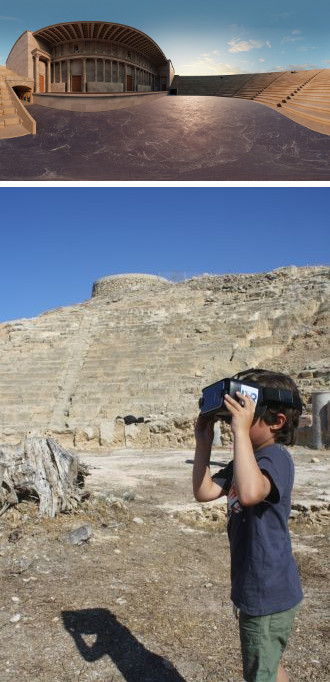Sydney Uni launches ancient view
 Australian experts have programmed 20 years’ worth of research into a virtual reality recreation of an ancient Cypriot theatre.
Australian experts have programmed 20 years’ worth of research into a virtual reality recreation of an ancient Cypriot theatre.
The University of Sydney has partnered with digital technology firm Lithodomos VR (LVR) to create a virtual reality mobile application depicting the Nea Paphos Theatre during in 150 AD, around the time of the Antonine emperors.
University archaeologists and Melbourne-based LVR designers have worked together to build an app that shows off a 360-degree view of the building’s grand Roman façade, marble columns, imperial statues and painted entranceways.
For the last 20 years, Dr Craig Barker has led the University’s efforts to uncover Nea Paphos, the capital of Cyprus during the Roman and Hellenistic periods (c. 300 BC-400 AD) until it was destroyed by earthquake in 365 AD.
He and an army of colleagues, University students and volunteers have uncovered paved Roman roads, an ancient nymphaeum (water fountain) and the semi-circular theatre.
Only the foundations of the Paphos Theatre, used for performance and spectacle for more than 600 years, remain today.
The Paphos Theatre in VR app, available on Google Play and iTunes, enables users to immerse themselves in the site’s Roman splendour.
Under the Romans, the theatre was 100 metres in diameter, held 8,500 people and was replete with architecture imported from the Mediterranean.
“Past physical restorations of archaeological sites have been based on knowledge of the day,” says Dr Barker.
“The beauty of digital restoration is that it can be changed as new evidence comes to light.”
Dr Barker has used the app at the heritage listed site when giving Cypriot school children tours of the archaeological site as well as with school groups visiting the University’s Nicholson Museum.
“We have brought history to life and used modern technology to examine a 2,000-year-old building.”







 Print
Print